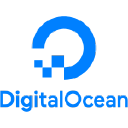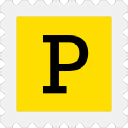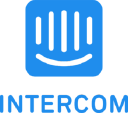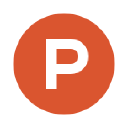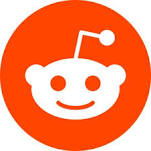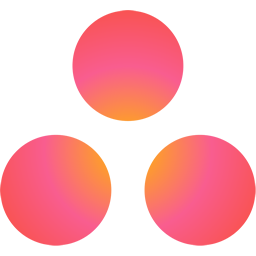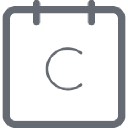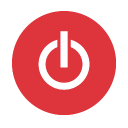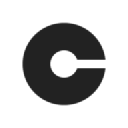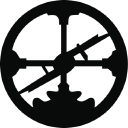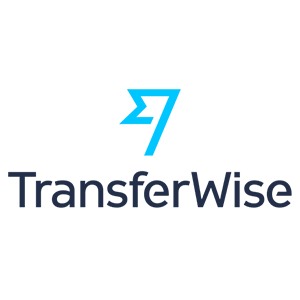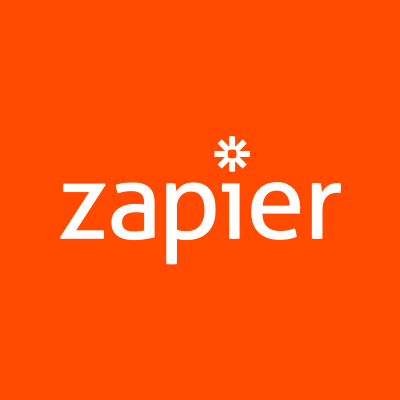
How I Created A Conversion Rate Optimization Software And Landed The #1 On Product Hunt
Hello! Who are you and what business did you start?
Hello, my name is Quinn Zeda and I am the founder and CEO of Conversion Crimes.
I’ve never had a real job as I started my first business right out of college. For the last 10 years, I’ve been running my business while traveling the world as a digital nomad. When the pandemic happened I was in Playa Del Carmen, Mexico which has now become my home.

After spending 17 years servicing clients with everything from design to websites to conversion rate optimization (CRO) and helping clients generate millions in additional revenue - I decided to build my own thing and move out of the trading time for money cycle… which led me to create Conversion Crimes.
Conversion Crimes is a software with a service geared towards small businesses and agencies to help them with conversion rate optimization and user experience.
The core of Conversion Crimes is usability testing which is watching people use your website or software for the first time.
They record their screen and speak their thoughts out loud as they answer key questions such as:
- Is it easy to buy?
- Do they trust it?
- Do they understand what it is and how to use it?
You get to see exactly what that person's experience is. You gain insight and this knowledge helps you know precisely where and how you need to make changes.
If you don’t have the traffic you can make changes and run the test again to see if their experience changed for the better or if new issues arise.
If you have the resources and traffic you can a/b test them and make statistically significant decisions.
Either way, these changes improve the user experience and thus conversions. It eliminates the guesswork, the need for CRO experts, and makes conversion rate optimization more accessible to more businesses.
We launched officially on September 3, 2020, on Product Hunt and ended up #1 for the day. In our first month, our revenue was just shy of $10k.

What's your backstory and how did you come up with the idea?
For the last 7 years, I’ve been running some version of my now ex-agency Zeda Labs focusing on helping websites increase revenue with conversion rate optimization and user experience design. We were unique in that we sold our focus by only doing one major project at a time and the only other way to work with us was our smaller audits.
We found that in both our audits and large redesign projects most of the best findings came from usability testing.
It drove a lot of insights and changes that led to results. At the same time, we had a ton of small businesses coming to our agency wanting to work with us, but even our audits were too expensive for them.
A/B testing is the hot topic for Conversion Rate Optimization (CRO) but not every site has enough traffic or conversions (1,000). For many sites, it could take months or even a year to get statistically significant results.
Usability testing is fast, affordable, and easy to do with a high return on investment. You don’t need traffic and with our platform you can do it in a few hours.
The current testing solutions on the market didn’t fit our use case and required a lot of spreadsheets and a few days to gain insight. We thought there could be a better workflow and reimagined what usability testing could be.

These were our very first customers - sold while chatting at a coworking spot. When they saw a user encounter an error they jumped out of their chair in disbelief. Once it was fixed it increased conversions by 113%
I held a small presentation on usability testing to 23 entrepreneurs and made 9 sales totaling $1,765.
We used it internally with clients as part of our audits at the agency. With every audit sold, the user testing deliverable was the one thing almost everyone commented on and had strong positive reactions to.
That’s when I knew we were on to something and that the market saw real value in the product.
Take us through the process of designing, prototyping, and manufacturing your first product.
Usability testing was a big part of our process at Zeda Labs and when usertesting.com shifted their focus to enterprise accounts, their sales team priced us out.
That was the catalyst that inspired me to create a better solution to fix all the issues I had with them.
The first iteration of the product was a paper MVP made with Google forms, Amazon’s mechanical Turk, and countless hours. I proved that I could train testers to give higher quality feedback on a small scale and that entrepreneurs would pay for and find value from the service.

Me in Playa Del Carmen, Mexico where I originally had the idea and built the first version.

Early sketches of what the interface could look like.
While usability testing is very common in the enterprise and user experience world, it’s not well known outside of that. I wanted to prove that I could sell it to the SME market and that they got results from it.
In the second iteration, I tried to do human automation, but it was still too much work to process the orders while still running the agency.

I was very happy to see this spreadsheet die a slow death! 😂
For market validation, I tried to hire a college kid to code up a version that would at least work long enough to prove the model... Then right before launch he was a victim of a mass shooting event and needed time to recover from the experience. He went MIA.

The first real coded version that never launched.
And… we ended up back at square one 2-weeks before our scheduled launch.

The core team and I were all together in Thailand at a villa for our first retreat in anticipation of our launch and a conference - so we took the challenge and got right to work!
Henry, my developer, and I built in WordPress for years together.
That’s when we decided to build the first version of the product in it. We knew it very well and had experience working with it as a team and it’s a powerful CMS. Features that would normally take days to build could be done in a few hours.
The idea is it would last up to a certain point to get traction and then we’d need to rebuild a back-end for scale later.
The point was to just launch and the next version was born!

Describe the process of launching the business.
We built Conversion Crimes on the side of the agency, but we picked it up and put it down more times than I care to count. Clients were always our priority.
I started to shift the agency to a design subscription, but then CoVid-19 hit, and priorities shifted. At that moment when I thought about what direction I wanted to go as an entrepreneur, I decided to go all-in on something I fully controlled the destiny of.
And with that, it was pretty much the end of the agency.
In July this year, I fulfilled the majority of our agency contracts and then put the whole team full-force on Conversion Crimes in August for a September 3 launch.
We made a new website that better represented us and developed new core features to get us to a minimal marketable product. We crammed 3 months of work into 3 weeks and I barely slept.
We build out our reporting feature, one of the main differentiators for us against competitors.

With a remote business, I had to stay up until 2-3 AM to give daily morning updates to the Thailand and EU team. Then sleep for a few hours and catch them at 8 AM to end the day with them.
A few days before launch, we decided why not launch on Product Hunt?
We were scrambling to put the finishing touches on everything and get assets ready for launch.

Before / After
We had to rush our processes to meet our timelines so a lot of the stuff we pushed were guesses based on limited information.
To combat that we listened to feedback, kept talking to people, and iterated on the fly.
Then we used Conversion Crimes ON Conversion Crimes to get more feedback. How meta!
Soon after it became this:

We were able to get #1 on product hunt for the day and #3 for the week. It did not result in a lot of direct sales - our messaging was still off and the conversion was meh.
WHY? The website didn’t explain the product well enough to a new market so they were skeptical and we didn’t have enough social proof/trust to build confidence.
However, we made just shy of $10k in sales our first month with the boost Product Hunt gave us. If someone hit up chat or booked a demo and I could answer questions directly, my closing rate was on point.
But that meant most sales depended on me and I needed to fix that.
After having a few dozen demos and customer calls I came up with the current iteration and collected testimonials from our customers for social proof.
We’ll see how it does.

Since launch, what has worked to attract and retain customers?
After the initial boost of Product Hunt, we focused on talking to customers, doing demos, and having sales calls.
In the meantime, to low-key promote Conversion Crimes I found 4 high-quality relevant communities to be part of. The goal was to give massive value and build an expert reputation in them.

By building trust before they went to the website, they booked calls, and it was easier to make sales.
Twitter was also a great place to network. There are a ton of badass entrepreneurs, authors, and cool people with who you can easily interact and join conversations. I hadn’t been on Twitter in years and I was surprised at how awesome (and easy) it was.
At this stage for us - two months in - it’s trying a lot of things, seeing what sticks, and doing more of that.
How are you doing today and what does the future look like?
To run the agency at full force we had a $20-25k/month burn rate and to go all-in on Conversion Crimes we had to reduce people and/or hours and expenses.
As part of that, I stopped taking a salary from the business.
Currently, we’re a skeleton team with just 4 people full-time including me (CRO/UX, admin, and a designer) and a handful of others on a contract basis (developer, operations, moderators, tester advocate) making the team 11 people total.
Our short-term goal is to get ramen profitable. This would be around $25k/month. We're also working to raise capital.
Once we grow revenue I’ll be freeing myself so I can focus on my superpower instead of being a manager. We’ll be hiring a full-time operations manager, developer, and customer success specialist.
Update: A few days before this story was published and just 3 months into our journey - Earnest Capital invests in Conversion Crimes! 😱 🚀
Through starting the business, have you learned anything particularly helpful or advantageous?
The biggest challenge I had building Conversion Crimes was trying to work on 3 businesses at the same time. I had Zeda Labs - the agency, its client work, AND Conversion Crimes.
It didn’t work to have the team's attention so divided. It was too much to concentrate on and our resources were limited so Conversion Crimes always fell to the side.
In the end, I failed at all of it. We executed well for clients but the split focus between the agency and Conversion Crimes meant that neither went far.
If I had to do it all over again and build something on the side of running the agency, I would focus on growing the agency and making it more profitable. This would enable me to create a separate team that could focus solely on Conversion Crimes.
Instead, I went the bootstrapping route, made just enough to pay for the team, and have minor profits to reinvest which only ended up prolonging and dragging it out to the point of complete frustration.
This pushed me to just go for Conversion Crimes and jump without really having everything ready to do so and caused some headaches later on.
What platform/tools do you use for your business?
Video Platform: Vid Grid
Building out a complete screen recording software, video upload, transcoding, and delivery system is a huge undertaking.
Team Communication: Slack
We use this for communication, but thinking of maybe moving to Discord?
Payment Processing: Stripe
Email Marketing: Convert Kit
Transactional Emails: PostMark
Project Management & Wiki: Notion
Development: Digital Ocean, Server Pilot, Simple Backups
Customer Support: Intercom
What have been the most influential books, podcasts, or other resources?
Both of these books are the same message, different flavors.
“What’s the ONE Thing you can do such that by doing it everything else will be easier or unnecessary?”
People think they can multitask, but really they can’t. We might be able to do multiple things at once, but we can’t focus on two things at once. It leads to task switching, which costs a lot of valuable energy and efficiency.
This had me focusing on one major client project and I wish I would have just focused on one business. Some people thrive on having a ton of projects, I don’t.
Where can we go to learn more?
Conversion Crimes
Quinn Zeda
If you have any questions or comments, drop a comment below!

Download the report and join our email newsletter packed with business ideas and money-making opportunities, backed by real-life case studies.

Download the report and join our email newsletter packed with business ideas and money-making opportunities, backed by real-life case studies.

Download the report and join our email newsletter packed with business ideas and money-making opportunities, backed by real-life case studies.

Download the report and join our email newsletter packed with business ideas and money-making opportunities, backed by real-life case studies.

Download the report and join our email newsletter packed with business ideas and money-making opportunities, backed by real-life case studies.

Download the report and join our email newsletter packed with business ideas and money-making opportunities, backed by real-life case studies.

Download the report and join our email newsletter packed with business ideas and money-making opportunities, backed by real-life case studies.

Download the report and join our email newsletter packed with business ideas and money-making opportunities, backed by real-life case studies.
